Environmental conservation and energy savings, as the fundamental assumptions for sustainable development, and financial savings are possible through the use of new, non-standard materials and technologies in the building and maintenance of roads. Different types of waste materials and industrial by-products may be used in road construction as an alternative to standard materials. In order to be applicable, alternative materials must meet certain engineering characteristics, show an acceptable level of execution, and be economical in comparison with traditional materials.
The reasons for the use of alternative materials are many and largely outweigh the possible shortcomings. The use of alternative materials is significant from both the ecological and economic perspectives. Ecologically, the use of alternative materials means a lesser need for the exploitation of natural resources and the quantity of waste accumulated in landfills is reduced.
Alternative materials that can be used as a replacement for standard building material differ by their chemical and physical characteristics, the original state in which they are found, the additional processing they should undergo before being used, and by their intended purpose. A whole array of materials can be reused, with minor finishing or without it. Thus, for a variety of uses in the construction of roads and highways can be utilized: the construction and demolition waste, recycled asphalt, crushed concrete, fly ash and slag from thermal power plants, metallurgical slag, cement and lime kiln dust, silica fume, foundry sand, waste-rock, ash from incineration plants for solid municipal waste, byproducts of quarries, roofing shingle waste, old rubber, sewage sludge ash, glass and ceramics, and plastics waste.
Detailed analysis of various types of alternative materials used for road construction is given below.
Natural rock materials
Naturally occurring materials, such as rock and soil, constitute a significant portion of the materials content and cost of a road. It has been found that different types of rock perform differently in the various layers of a pavement and that these differences are greater in rocks than in soils. It has also been found that environmental conditions, such as climate and topography, play an important role in the performance of such materials in roads. Consequently the durability of natural materials is an important factor in their selection for use in roads. Asphalts are most commonly used natural rock material , however since we are talking about alternatives, we will focus on crushed stone and Phosphate waste rocks.
Crushed stone is the world’s most basic mineral commodity. It is abundant, widely available, and inexpensive. It is a material that people are familiar with in almost all parts of the world. Most crushed stone is used in highway construction and building construction. In the construction of a two-lane asphalt highway, about 25,000 tons of crushed stone is used per mile.
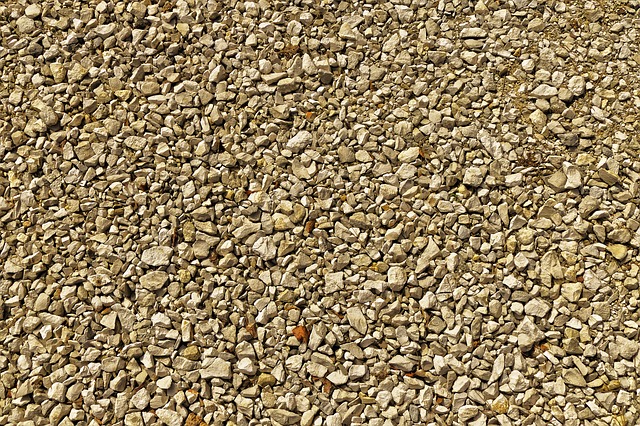
Many different rock types are used to make crushed stone. The types used to make crushed stone include the following: limestone, granite, trap rock, sandstone, quartzite, dolomite, volcanic cinder and scoria, marble, slate, dacite, shell, and calcareous marl. Each of these rock types is suitable for a number of uses.
The use of unusual industrial by-products in road techniques can contribute to the conservation of non-renewable natural resources and the reduction of wastes produced by some industries. Phosphate waste rocks could be considered as a potential alternative secondary raw materials in road construction. The guide has classified these materials as waste products, which consequently, cannot be used in road construction. However, phosphate waste rocks are sedimentary natural rocks which have not been subjected to any transformation other than mechanical fragmentation.
MANUFACTURED AGGREGATE
These are purpose-made from selected materials such as crushed rocks for manufactured sand, fly ash for fly ash aggregate, and by-products from other mineral-extraction processes such as clay for expanded clay aggregate.
Foamed Blast Furnace Slag (FBS)
Foamed blast furnace slag (FBS) is a by-product of iron slag produced in a similar way to granulated blast-furnace slag but with a controlled amount of water, applied to the molten slag to trap the steam in the mass, giving a porous, pumice-like product. This product is then crushed and screened to sizes suitable as lightweight aggregate.

Fly Ash Aggregates
Several lightweight concrete aggregates can be produced from fly ash. In addition to the use of furnace bottom ash in concrete masonry, pellets of fly ash can be bound by thermal fusion or chemically, using cement or lime. Such materials have many desirable properties.
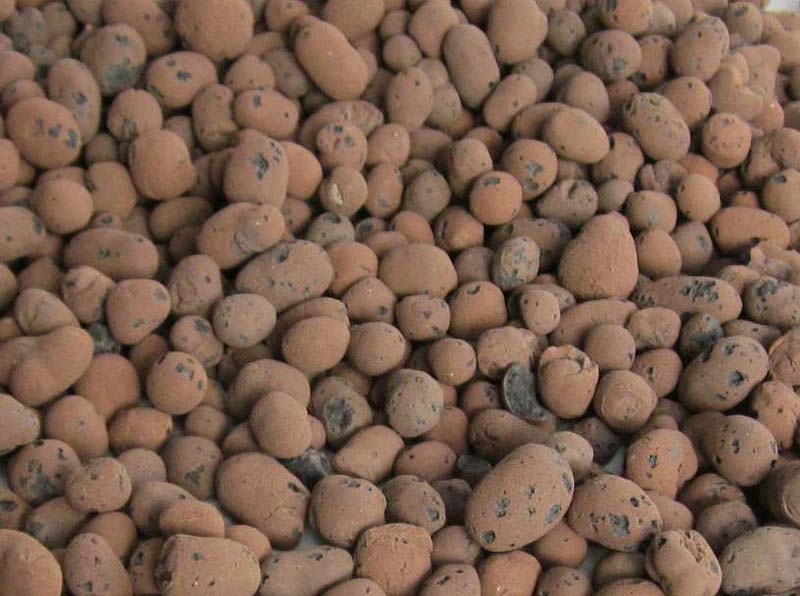
Manufactured Sand
Manufactured sand is a purpose-made crushed fine aggregate produced from a suitable source material and designed for use in concrete or road construction. Only source materials with suitable strength, durability and shape characteristics are considered. Production generally involves crushing, screening and possibly washing. Separation into discrete fractions, recombining and blending may be necessary.
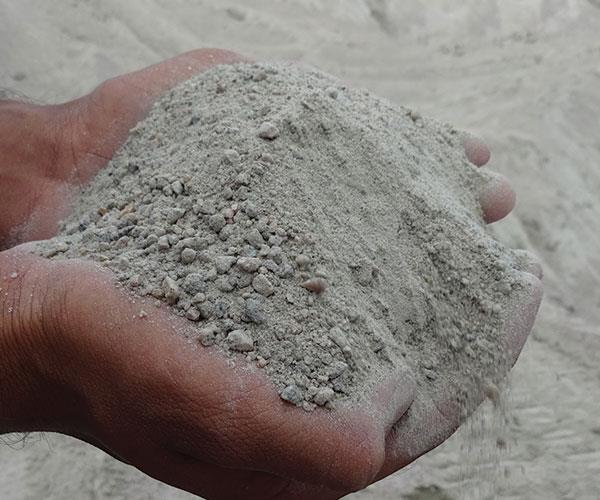
Polystyrene Aggregate
Crushed waste expanded polystyrene is used in combination with normal weight aggregates to produce lightweight concrete. An Australian proprietary product using coated small polystyrene beads (a maximum size of 3 mm or 1.5 mm) or recycled granulate (shredded and graded to a maximum size of 5 mm) was introduced into the market in 1990. The product is used and supplied in standard premix concrete trucks with concrete density ranging from 300–1800 kg/m3 and a compressive strength range of 1–15 MPa10. The coated aggregate has a density of 32 kg/m3 and a material thermal coefficient (k) of 0.04 w/mK. SEM has shown that the coating allows crystals of cement hydrates to grow into the surface of the polystyrene aggregate.
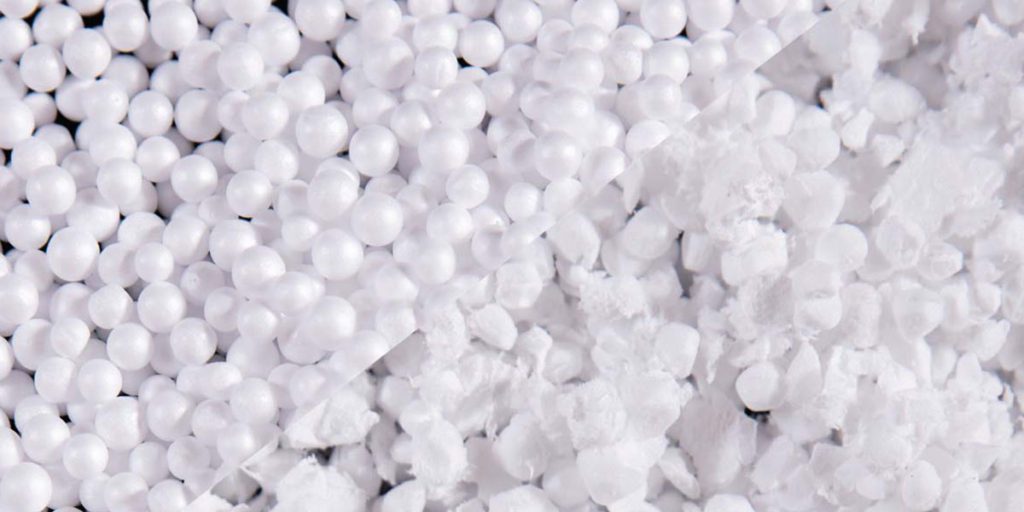
Expanded Clays, Shales and Slates
Certain clays, shales, and slates expand several fold when heated to a semi plastic stage (as a result of the formation of gas within the mass of the material at the fusion temperature) and develop a cellular internal structure. Heavier expanded clay, shale and slate aggregates can be used for structural lightweight concrete including prestressed concrete elements.

REUSED BY-PRODUCT
Reused by-product aggregates are aggregates produced from by-products of industrial processes. Examples include various aggregates from iron and steel manufacturers.
Air-cooled blast furnace slag (BFS)
It is a by-product of iron manufacturing, in which silica and alumina constituents combine with lime to form a molten slag collected on the top of the iron in a blast furnace. The slag issues from the furnace as a molten stream at 1400–1600°C. If this is allowed to cool slowly, it solidifies to a grey, crystalline, stone-like material, known as air-cooled slag. This product is then crushed and screened to sizes suitable as coarse aggregate.
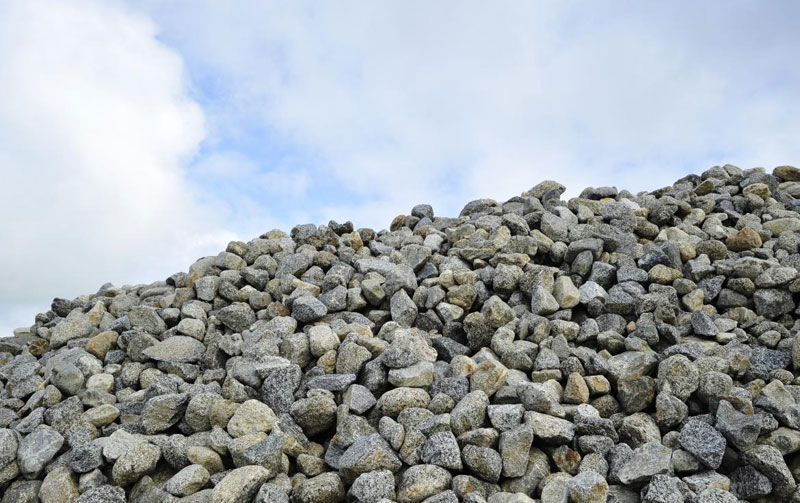
Granulated Blast Furnace Slag (GBS)
Granulated blast furnace slag or slag sand is the product of rapid quenching of molten blast furnace slag with an excess amount of water to produce a sand-like product. In Australia, granulated slag is used primarily in the production of ground granulated blast furnace cement. Excess amounts of such granulates can be used as a fine aggregate (coarse sand).
Electric Arc Furnace Slag (EAF) Description Electric arc furnace (EAF) slag is a by-product of steel formed in an electric arc furnace. In the process, steel scrap and fluxes are added to a refractory lined cup-shaped vessel. This vessel has a lid through which carbon electrodes are passed. An arc is induced between the scrap and electrodes and the resultant heat generated melts scrap and fluxes. Steel and slag are also separated similarly to the steel furnace slag process.
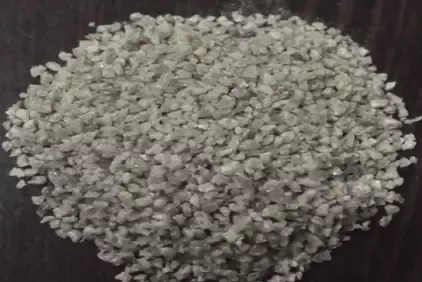
Steel Furnace Slag (BOS)
Steel furnace slag is a by-product of steel formed in the Basic Oxygen System (BOS). BOS slag is tapped from the vessel after the exothermic refinement of molten iron and recycled steel in the presence of fluxes and oxygen. It consists of calcium silicates and ferrites combined with fused oxides of iron, aluminium, calcium, magnesium and manganese. After air-cooling, the material has a predominantly crystalline structure and is crushed and screened for use as coarse aggregate.

Furnace Bottom Ash (FBA)
Bottom ash is formed when ash adheres as hot particles to the furnace walls, agglomerates and then falls to the base of the furnace where it is collected for disposal. Bottom ash and boiler slag make up approximately 10% of the total ash produced and range in grain size from fine sand to coarse lumps. Bottom ash has chemical compositions similar to fly ash.
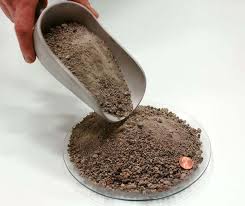
Incinerator Bottom Ash (IBA)
More than 90% (by mass) of incinerator residues consist of bottom ash, a slag-like material. As far as domestic refuse is concerned, the incinerator ash, after removal of ferrous and non-ferrous metals, can be ground to a fine powder, blended with clay, pelletized and fired in a kiln to produce sintered domestic refuse artificial aggregate.
Coal Washery Reject (CWR) Description Coal reject material or colliery spoil is a by-product of the coal preparation process and is mostly produced in conjunction with the beneficiation of coking coal. Raw coal is washed to remove the high ash materials contained within it when it is mined. The material producing ash includes: plies of non-carbonaceous or low carbonaceous material within the coal seam; roof and floor material inadvertently mined with the coal; and dyke rocks that have intruded into the coal seam.

Crusher Fines
Crusher fines is a sand-size material produced as a result of the crushing and screening operations within a quarry plant. It is most commonly produced from hard rock quarry operations but may also be generated from the crushing of gravel deposit materials which liberate suitable fines

SYNTHETIC AGGREGATES
Greater activity in highways and other construction has speeded the rate at which high-quality aggregates are consumed. This situation, coupled with an unbalanced geographical distribution of deposits, has created a supply problem in some areas, and many more areas are expected to encounter a problem in the future. To compensate for the shortage or high cost of aggregates, less commonly used materials, such as shell and scoria, are being substituted in highway construction. Stabilized soils are also being substituted for aggregate in bases and subbases. Another approach to the problem is to use synthetic rather than naturally occurring aggregates.
A study was made to identify existing and potential materials suitable for producing synthetic aggregates, to conceive new methods of producing such aggregates, and to evaluate the present and future prospects for their use in highway construction. A large number of existing and potential synthetic aggregates were identified. Several manufactured or by-product materials, such as lightweight aggregates and blast-furnace slag, currently are used as aggregates; other by-product or waste materials that might be used after minor mechanical processing include a number of ceramic wastes, various industrial slags and clinkers, demolition wastes, and scrap iron or steel. The study considered potential methods for producing new synthetic aggregates — by sintering or fusing such fine-grained natural material as sand, clay, or soil, or such waste materials as steel-furnace dusts or mining wastes; or by chemical or thermochemical processing of mixtures such as those of sand and lime or fly ash and lime. Synthetic aggregates offer a possible alternative to importing natural aggregates from other areas. The present worth of synthetic aggregates for highway construction thus depends on specific economic factors in the locality suffering an aggregate shortage. In time, when the aggregate shortage becomes more widespread and the importing of natural aggregates becomes too extensive and costly to be a sound practice, synthetic aggregates may provide a feasible solution to the problem. The most significant development for the future is likely to be either the use of job-site materials for making synthetic aggregates in versatile and portable processing equipment or the establishment of a widespread synthetic aggregate industry which processes widely available materials such as clays and shales. Another possibility, the development of new highway systems requiring lesser quantities of aggregates, should not be overlooked. Different ty[es of synthetic aggregates are given below.
Heat Treatment of Fine-Grained Natural Materials
This process yields synthetic aggregates having desirable characteristics for use in highway construction, but limitations on raw materials and high production costs severely restrict the usefulness of this source of synthetic aggregates. Several potential methods of surmounting these limitations were suggested. It is recommended that, in addition to bloating clays or shales, other more widely available material be used. A dense aggregate might be produced by heat treatment of non-bloating materials or, if lightweight aggregate were desired, gas generating materials might be added to cause bloating. Potential alternate raw materials include clays and shales of all descriptions, sand, soil, and loess, a finely divided, wind-blown material.
Heat Treatment of By-Product or Waste Materials
A number of such materials are available in limited quantities and usually in isolated locations. Phosphate slimes, coal mine tailings, electric steel furnace dust, and smoke abatement dusts are typical examples. Phosphate slimes are the colloidal phosphate-clay residues which result from the production of phosphate pellets. They are produced primarily in Florida, but there are also sizable deposits in Tennessee. The estimated amount of waste slime produced during 1963 was about 20 million tons, When dewatered, dried, pelletized and fired, these slimes, which prior to dewatering normally contain about 20 percent solids, can be used to produce an excellent lightweight aggregate. The firing characteristics are very similar: to those of clays used to make lightweight aggregates. The slimes have a short firing range and are self bloating at temperatures on the order of 2,000 to 2,200 F. The primary drawback to the use of phosphatic clays is their colloidal nature which makes dewatering a costly and time-consuming operation. Coal mine tailings, especially those associated with the waste dumps or gob piles, are another potential source of waste products suitable for the production of synthetic aggregates. Electric steel furnace dust and smoke abatement dust are extremely fine particles collected from stack gases. Although little information is available about their characteristics and properties, it is likely that they can be converted into synthetic aggregates by the pelletizing-sintering process used with fly ash.
Composite Materials
The characteristics of otherwise inadequate particles might be improved by coating them with an impervious skin. In general, any particle or material which is basically blocky or rounded in shape or may be pelletized might be coated with a fusible material. For example, aggregate particles of imperfect structure might be coated with a suitable clay slurry which would be fused at high temperatures. The interior could be a natural soil in a pelletized condition or it might have a porous honeycomb-like interior. Solid core materials such as sand grams or soft stone particles would require a coating of minimum thickness. A core of softer material, such as pelletized soil, could be surfaced with a thicker coating so that the quality of the product would more closely resemble that of the coating material. The firing requirements would be determined by the type and thickness of the coating material. The chemical properties of fired clay-coated particles would closely resemble those of the surface material while the density and strength would be primarily a function of the core material. The performance of the product could be controlled by proper selection of the components.
Crushed stone
Crushed stone is the world’s most basic mineral commodity. It is abundant, widely available, and inexpensive. It is a material that people are familiar with in almost all parts of the world.
Most crushed stone is used in highway construction and building construction. In the construction of a two-lane asphalt highway, about 25,000 tons of crushed stone is used per mile.Many different rock types are used to make crushed stone. The types include the following: limestone, granite, trap rock, sandstone, quartzite, dolomite, volcanic cinder and scoria, marble, slate, dacite, shell, and calcareous marl.
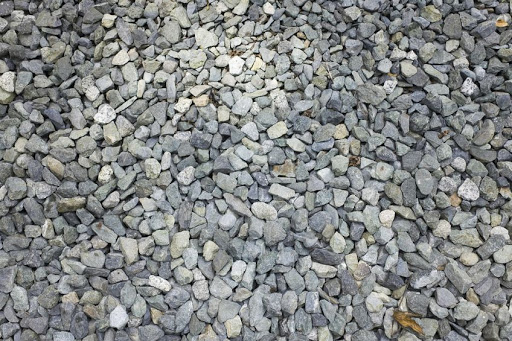
Recycled Materials in Road Construction
With the evolution of the road industry and growing traffic on roads, construction materials have also been evolved and more unconventional ingredients have been incorporated. The rationales were the scarcity of conventional natural materials and the jeopardized environment which have underpinned the tendency towards evaluation of other materials resources to be incorporated in the road industry. The inclusion of such materials entails several secondary and tertiary materials. Several waste by-products and materials have been investigated, assessed, evaluated for utilizations and practiced in the field.
Plastic Wastes
Most littered plastics are rich in polymers. It can be used either as a stabilizing agent in soil and subgrade applications or as an additive to aggregate blends in hot mix asphalt pavement. It is either added to the binder as pellets in the rate of 0.25-0.5% of binder weight in the wet approach or to the aggregates in the dry approach. All in all, the wet method outstrips the dry method in easiness and applied shearing forces to ensure dispersing of the plastic chips. HDPE is preferred over LDPE in enhancing HMA mechanistic properties. The higher the rate of added plastic less susceptible to temperature the bitumen becomes.It improves stripping resistance. 30% of LDPE in the dry method developed the mixture stability and in the rate of retained tensile strength.

Structural Wastes
Structural waste materials from demolition and abandoned roads may be processed into an aggregate material. Demolition wastes are those which may be reclaimed from destruction and removal operations of buildings. Large quantities of broken brick, plaster, stucco, concrete and natural building stones are available in large metropolitan areas where slum clearance programs are being accelerated. Additional materials such as brick and stone may be obtained from abandoned roads, usually found in rural areas. These materials, depending on their quality, make an excellent base and subbase aggregate. Wastes such as the rock used in macadam roads could qualify as concrete aggregate after processing. Large-scale clearance programs are often associated with the construction of expressways and highways. The quantities of demolition materials available obviously change from year to year and city to city, and vary with the size of the city. For large clearance areas, the quantities may easily reach many thousands of tons. Their use would be most advantageous near the point of origin.

Recycled Asphalt Shingles
Asphalt shingles are categorized into two groups, fiberglass, and organic shingles. Both types are composed of varying rates of mineral fibres, mineral fillers, and hard rock granules (ultra-tiny particles ceramic – coated granule) in addition to asphalt cement of an average percentage of 30% by total mass.

Reclaimed Asphalt Pavement
The rate of utilizing reclaimed asphalt pavement in HMA and base material in Ontario has been reported to be as low as 8% of the total recycled material used between 2004 and 2006.The characteristics of RAP vary from one source to another according to the type and properties of aggregates material, binder content, binder stiffness, of the scarified pavement.

Crumb Rubber “Scrap tires”
Whether it is processed in either the wet or dry approach, the crumbed rubber used in asphalt surfacing applications has several other advantages other than improved resistance to skidding. It also provides asphalt mixtures with high shear strength, which is favourable in withstanding imposed traffic load and preventing the occurrence of rutting in the underneath pavement layers.

Foundry sands
It is a by-product of ferrous and nonferrous metal casting industry and classified as a fine grained material consisting of a high-quality silica of a uniform size and a considerable cleanliness. Literature mentioned that sand is re-used at the foundries for as many times as it becomes possibly impractical to do so, then it is deposited as a waste sand foundry. It is at this stage when considering it for road works. This material has been utilized in HMA, subbase, embankments, and in backfill material as flowable fills.

Coal Combustion Products / Supplementary Cementitious Material
This includes fly ash, bottom ash/Boiler slag, pond ash, oil Sand, petroleum-contaminated soil, oil shale ash, and Brake Shoes Fine. The modest rate of heavy metals in fly ash [18] and ultra-tiny particles make fly ash as a mineral filler in HMA is viable. It can be of either type C, which is of high calcium content, or type E of reduced calcium content.
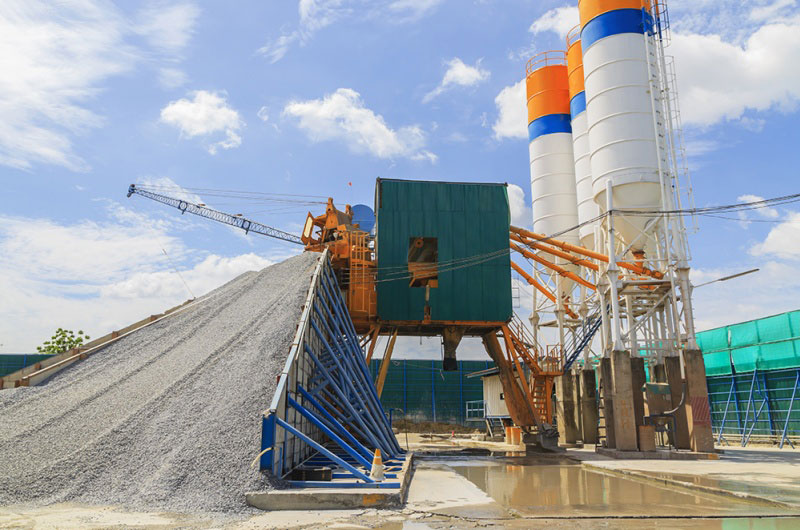
Industrial waste for road construction
There are many types of waste material found in India like industrial, building, household, agricultural etc. it includes fly ash, coal ash, stone quarry, plastics, glass, recycled aggregate, geo-naturals, fibers and polythene bags etc. Necessity of waste materials such as: scarcity of good quality aggregate/ soil for road construction. Production and accumulation of different waste materials, disposal and environmental problems and economy & gainful utilization is a very challenging task. Civilization also produces waste products. Disposal issue of the waste products is a challenge. Some of these materials are not biodegradable and often lead to waste disposal crisis and environmental pollution.
Industrial wastes from thermal power stations are fly ash, bottom ash and pond ash; from steel plants are blast furnace slag, granulated blast furnace slag and steel slag. Thermal power plant is a major role in power generating and in Indian scenario fly ash used of coal with high ash content.

Fly ash is one of the residues created during the combustion process and comprises the fine particles that rise with flue gases. In the civil engineering and industrial sense the term “fly ash” generally refers to coal fly ash captured from coal-fired power plants (thermal power plant) which is by far the most predominant fly ash used in construction and industrial applications. Depending upon the source and makeup of the coal being burned, the components of fly ash vary considerably, but all fly ash includes substantial amounts of silicon dioxide (SiO2) (both amorphous and crystalline) and calcium oxide (CaO), also known as Lime both being endemic ingredients in many coal-bearing rock strata, Iron (III) Oxide (FeO2), Aluminum Oxide (Al2O3). Depending on source coal may include one or more toxic chemicals in trace amounts: Arsenic, Beryllium, Boron, Cadmium, Chromium, Cobalt, Lead, Manganese, Mercury, Molybdenum, Selenium, Strontium, Thallium, and Vanadium.
Cement kiln dust (CKD) is the finely divided dry alkaline particulate matter carried from a cement kiln by the exhaust gas, and captured by the kiln’s air pollution control system. In general, however, the composition of cement kiln dust is similar to that of cement and consists of calcium carbonate, calcite, silicate, potassium sulphate, calcium sulphate, aluminum oxide, iron oxide, potassium chloride, magnesium oxide, sodium sulphate, and potassium fluoride. Cement kiln dust has a chemical composition similar to that of cement; therefore, the primary value of cement kiln dust is its cementitious properties.When cement kiln dust is used as a stabilising agent, the mixing and compaction of cement kiln dust are completed when it is initially applied or within 24 hours; and Cement kiln dust can be mixed with soil to modify plastic limits or moisture content to provide the desired stabilized properties.
Blast furnace slag is an industrial byproduct of iron produced in a blast furnace. It has similar properties of cement. It is used as binding material in road constructions. This slag consists primarily of silicates and aluminosilicates of lime and other bases. Blast furnace slag is generated during the melting process in steel making operations. The slag is a fairly complex mass that is relatively inert. It is composed of metal oxides (produced as a result of the oxidation of the metal during the melting process), melted refractory, sand from recycled scrap castings, coke ash, and other materials.
Steel slag is a byproduct of the steel-making process, contains fused mixtures of oxides and silicates primarily calcium, iron, unslaked lime, and magnesium. Steel slag contains significant quantities of iron; its highly compressed void structure results in a very dense, hard material. Steel slag obtained as a waste product during production of steel making, Particle size varies from 80 mm to 300 microns. Compared to blast furnace slag, steel slag contains lower amounts of silica, higher amounts of iron oxide and calcium oxide due to the presence of free lime, steel slag should be weathered before using it in construction.
Conclusion
Construction uses very large quantities of natural aggregates (gravel, sand, crushed stone) from excavation, and a considerable part of those quantities is used for the needs of road construction. Such continuous demand for natural materials depletes natural sources, and, in the areas lacking quality natural aggregates, the purchasing and transport costs increase the construction costs considerably. Exploitation of natural aggregates represents a loss, not only of aggregates themselves, but of the natural environment from which the aggregates are extracted. The exploitation procedure also gives rise to various negative effects that bring visual changes of the environment, increased heavy traffic carried out on the existing roads with an insufficient bearing capacity, noise, dust and vibrations.On the other side, accumulation of various waste materials on dumpsites or disposal of the materials that arose as byproducts in a technological or production process represents one of the crucial environmental problems.
A wide range of such non-standard, alternative materials has been used very successfully for a long number of years across the globe. Many state companies and services, as well as universities, are included in years-long research, development and demonstration of these materials. In order to be exploitable, alternative materials must meet certain engineering characteristics, show an acceptable level of execution and be economically comparable with the traditional materials.
Image and info:
Igi-global.com, onlinepubs.trb.org, ccaa.com.au, wiki, geology.com, designingbuildings.co.uk, ibmd.tatasteel.com, brickwell.co.in, cdeasia.com, isowall.co.za, natureswayresources.com, steel-360.com, quora.com, reade.com, mechanical-solutions.co.uk, citytoday.news, southwestlandscapingmaterials.com, paxcos.com bbc.com, yourhome.gov.au, cdrecycler.com, portableplants.com, recycleinme.com, sciencedirect.com, lkabminerals.com
worldcoal.org,



